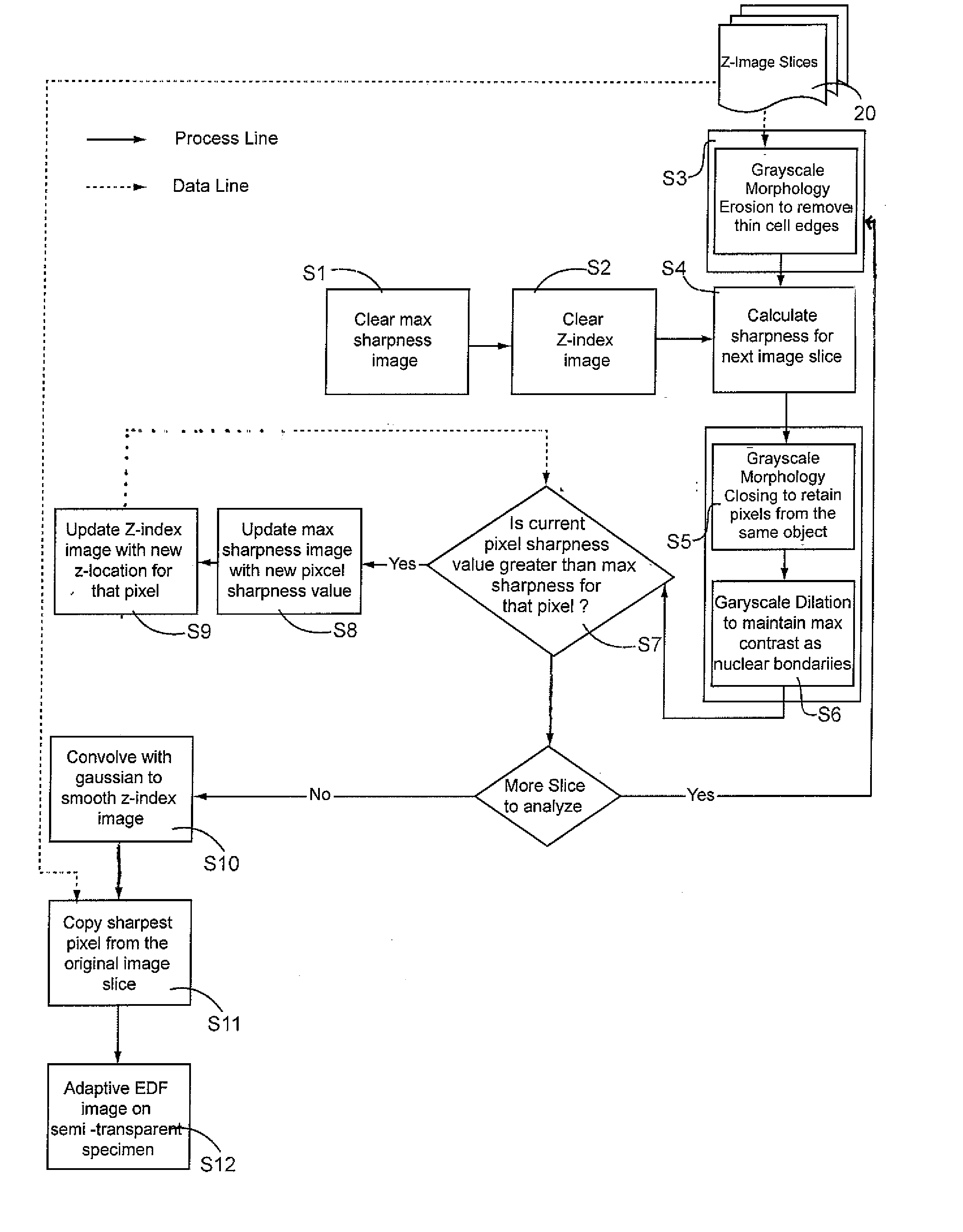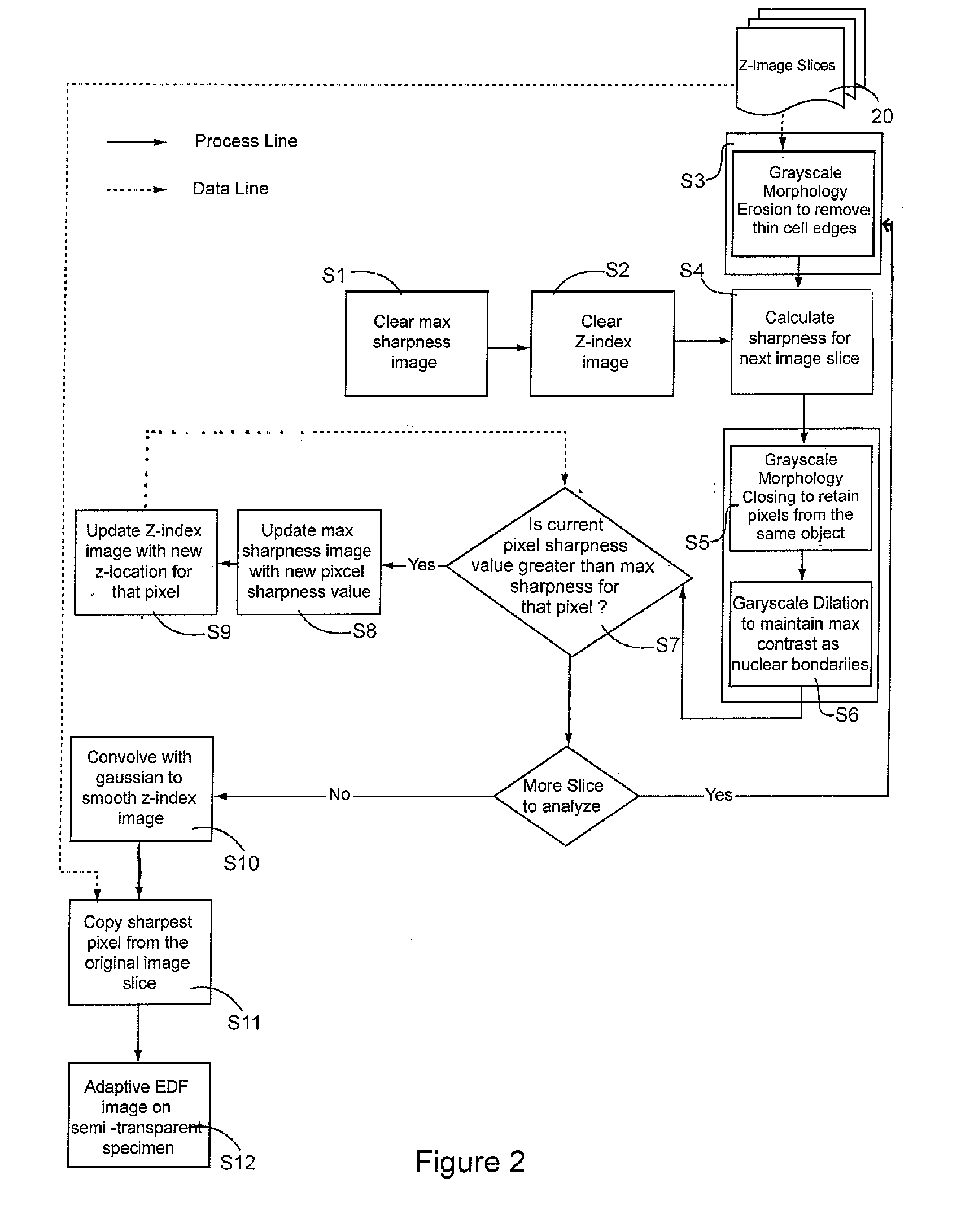Feature Dependent Extended Depth of Focusing on Semi-Transparent Biological Specimens
a semi-transparent, biological technology, applied in image enhancement, image analysis, instruments, etc., can solve the problems of microscopists constantly manually manually, objects that appear outside the narrow depth of field or focal plane become blurred and out of focus, and suffer from limited depth of field in high-resolution microscopy
- Summary
- Abstract
- Description
- Claims
- Application Information
AI Technical Summary
Benefits of technology
Problems solved by technology
Method used
Image
Examples
Embodiment Construction
[0024]Embodiments of the present invention will now be described with reference to the above-identified figures of the Drawings. However, the Drawings and the description herein of the invention are not intended to limit the scope of the invention. It will be understood that various modifications of the present description of the invention are possible without departing from the spirit of the invention. Also, features described herein may be omitted, additional features may be included, and / or features described herein may be combined in a manner different from the specific combinations recited herein, all without departing from the spirit of the invention
[0025]Limited depth-of-focus is a deficiency in microscope imaging of thick, semi-transparent biological samples that is effectively be rectified using EDF processing techniques that is the subject of the current invention.
[0026]Typically, in the preparation of a cellular specimen for pathology, a clinician will transfer and affix ...
PUM
 Login to View More
Login to View More Abstract
Description
Claims
Application Information
 Login to View More
Login to View More - R&D
- Intellectual Property
- Life Sciences
- Materials
- Tech Scout
- Unparalleled Data Quality
- Higher Quality Content
- 60% Fewer Hallucinations
Browse by: Latest US Patents, China's latest patents, Technical Efficacy Thesaurus, Application Domain, Technology Topic, Popular Technical Reports.
© 2025 PatSnap. All rights reserved.Legal|Privacy policy|Modern Slavery Act Transparency Statement|Sitemap|About US| Contact US: help@patsnap.com



